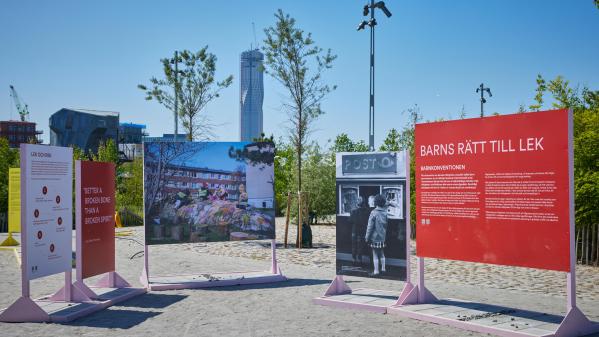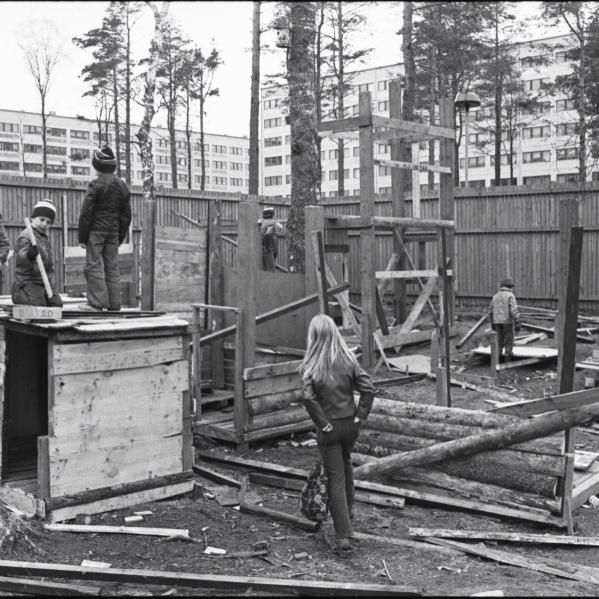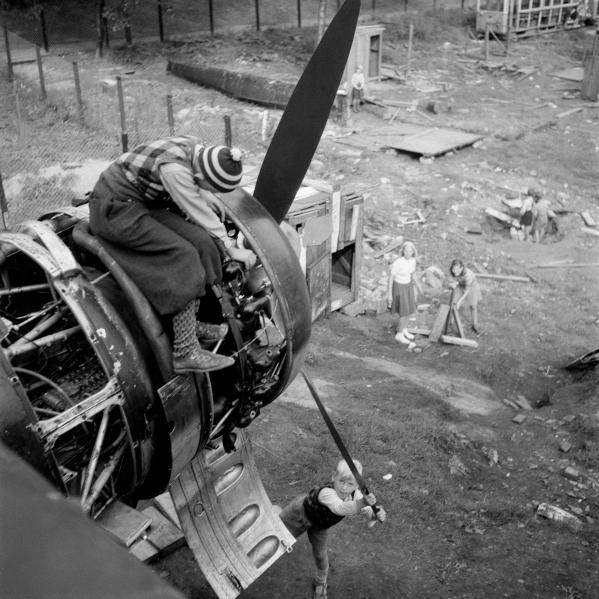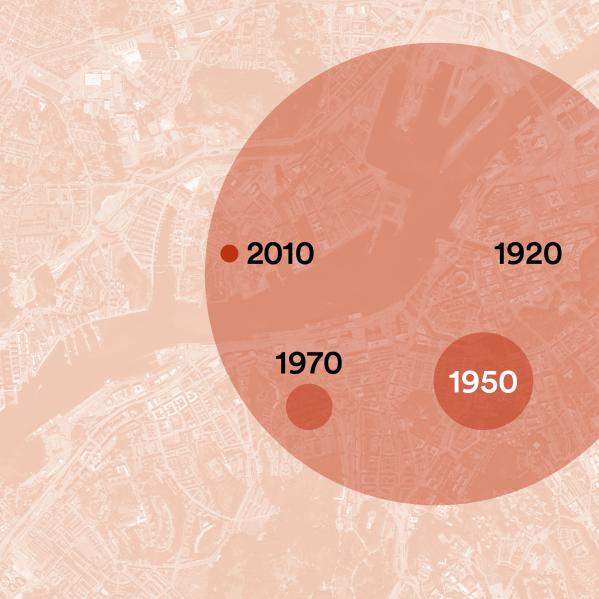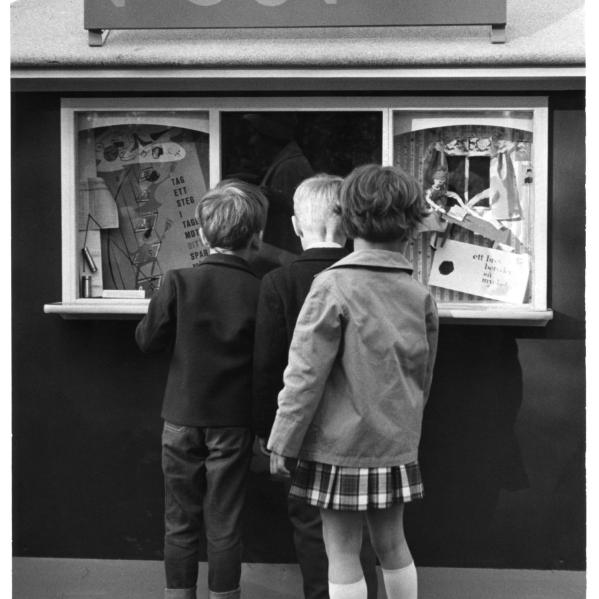In the outdoor exhibition PLAY! you get to see how children's place to play has changed over time and been affected by social development. According to the Convention on the Rights of the Child, all children have the right to play. Physical space and space for the city's younger residents is decreasing, yet 85 percent of Sweden's children live in cities.
In 2020, the Convention on the Rights of the Child became part of Swedish legislation. In it you can read that children have the right to express their opinion in matters that concern them and that they have the right to play, leisure and culture. It also states that the actions of adults are singled out as the biggest obstacle to children's free play.
Children need to play and move to develop, but in today's modern cities, the places and spaces for them are getting smaller and smaller. This is mainly due to densification and increased land prices. At the same time, children's need for free outdoor play is increasing. In addition to more exercise and better health, playing itself is absolutely crucial for their development.
The exhibition PLAY! is shown in Jubileumsparken in Frihamnen, Gothenburg during the city's 400th anniversary. You can also take part in the content in its entirety here, together with links to in-depth reading.
Intro
All children have the right to play. The exhibition PLAY! highlights the importance of play and shows how and where it takes place in the city. Children need to play to develop. Therefore, children all over the world play with what is at hand in their everyday life.
How have we in Sweden viewed children's play throughout the ages? What place do we give play today? In the last hundred years or so, children's play has moved from streets and backyards into designed, colorful and safety-adapted playgrounds. How did it get that way? Children's need for play is the same now as it was then. Children still often choose to play in the bushes despite adults offering them lavish play equipment.
The question of where play can take in the urban environment is complex. In the increasingly dense city, land is precious and different needs must be balanced against each other. Housing and traffic, industries and places of commerce must be accommodated while there must be space for parks and nature and play. In tough negotiations about how the land should be used, it is often difficult to argue for children's need for space and spacious everyday environments where they can play, move and develop. Knowledge of the importance of outdoor play is therefore important for both planners and the public.
We who made this exhibition want to remind you of the self-rewarding and free nature of play. With the exhibition PLAY! we want to invite you to reflect on playing and play environments. There are many good arguments for planning a child-friendly and playful urban environment. The exhibition PLAY! was originally developed for an exhibition at Form Design/Center in Malmö in 2019. This exhibition is a further development within Prototyp Göteborg and the anniversary initiative 400 green years.
